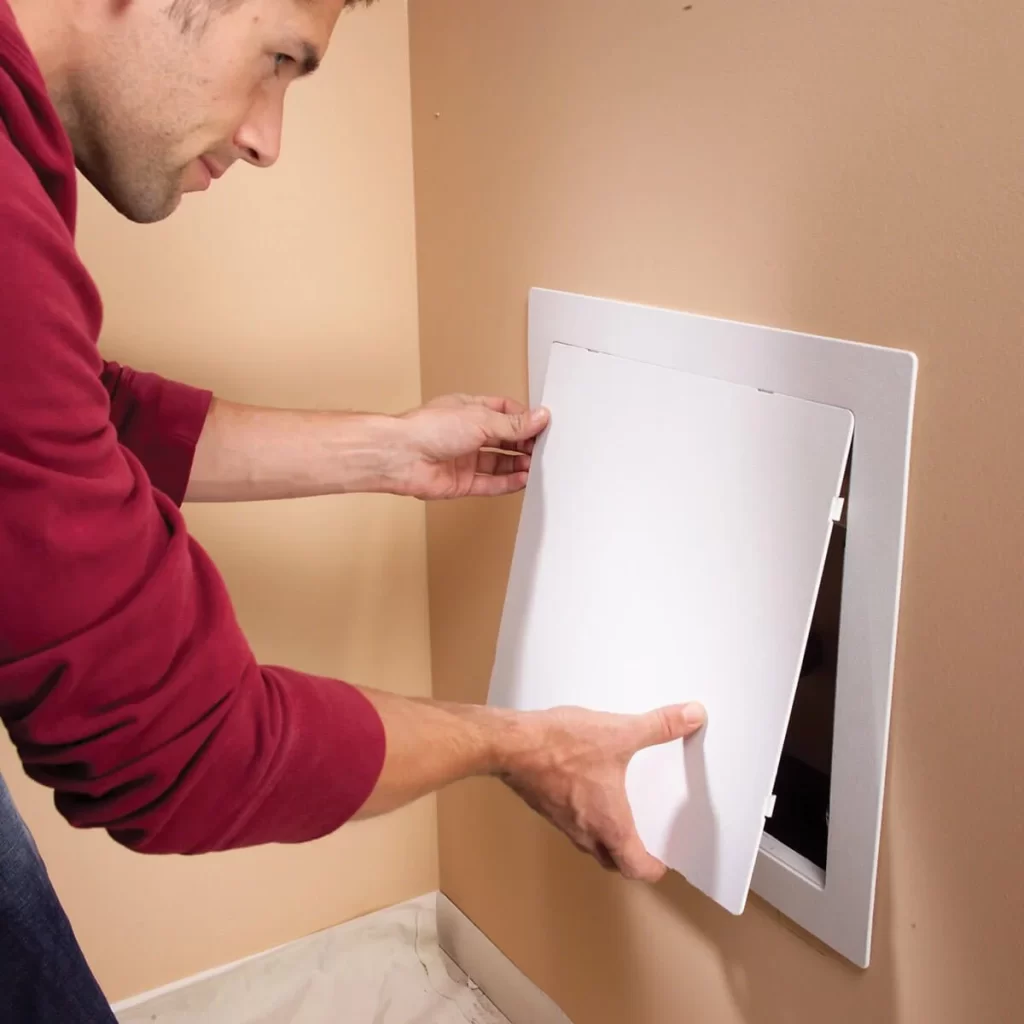Drywall access panels may not receive much attention, but they play a role in modern building design and maintenance. They offer a practical solution for accessing hidden utilities behind walls, such as plumbing, electrical systems, and HVAC components.
This article’ll explore everything you need to know about drywall access panels, from their purpose and types to installation tips and maintenance.
What Are Drywall Access Panels?
Access panels are often found in walls or ceilings and allow easy access to hidden systems. They blend in with the surrounding drywall, making them hard to see when closed. They also come in various sizes and styles to meet different needs.
Benefits of Drywall Access Panels
A drywall access door provides many benefits that improve functionality and appearance in homes and buildings. Here are some of them:
Promote Easy Repairs
They make reaching pipes, wires, and HVAC systems easy without breaking the wall. This speeds up maintenance and repairs, saving time and money. By providing quick access, they help avoid the need for costly and time-consuming wall repairs. The wall remains intact and looks good, even after multiple accesses.
Promote Clean Appearance
Access panels blend seamlessly with the wall, keeping rooms neat. They maintain a clean look without disrupting the room’s design. They allow easy access to important systems without compromising style. This integration ensures the space remains both functional and attractive.
Increase Safety
Providing easy access to important systems can quickly fix problems like leaks or electrical issues. It lowers the chance of more damage or safety issues. Quick access also means emergencies can be handled better.
Lower Cost
Labor and material costs are reduced when drywall doesn’t have to be broken and repaired for inspections and repairs. This lessens the need for major maintenance and eventually lowers the upkeep cost.
Promote Versatility
Available in various types and sizes, access panels can be used in different areas of a building. They meet specific needs, such as fire safety or noise reduction. Due to their flexibility, they can be used for a variety of purposes.
Choosing the Right Drywall Access Panels
Selecting the right drywall access panel depends on several factors:
- Location: Consider where the panel will be installed. Fire-rated panels are useful in places where fire protection is important. Soundproof panels work well in bedrooms or offices to reduce noise. Meanwhile, security panels with locks are needed in areas that require restricted access.
- Size: Measure the space where the panel will go to ensure it fits well. It should be big enough to access hidden systems easily but not so big that it stands out. Compare precise measurements with the panel’s dimensions to avoid installation issues.
- Material: Drywall access panels are made from materials like metal or aluminum. Choose a material that fits the room’s design and is strong enough for your needs. They are easy to install, with metal panels being more durable and secure.
- Budget: Think about the cost of the panel and what features you need. Basic panels are cheaper and good for general access needs. Special panels, like fire-rated or soundproof ones, cost more but offer extra benefits and protection. Consider the long-term savings and benefits versus the initial cost to make a smart choice. This helps you pick the panel that best fits your budget.
- Aesthetic: Ensure the chosen panel blends well with the existing decor. This might involve selecting a panel that can be painted or textured to match the wall. A well-matched panel maintains the room’s appearance and avoids appearing as an eyesore.
To Sum Up
Drywall access panels are an essential component in modern construction. They offer easy access to important systems behind walls, simplifying repairs and maintenance with less damage and disruption. By choosing and installing the right type of access panel, you can improve the function and look of any building.

